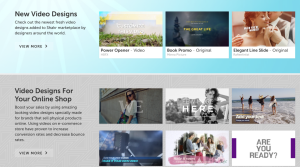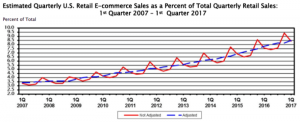Still struggling to hire the perfect employee every time?
If so, you’re stuck in an older recruitment model that doesn’t reflect the ways that technology has shifted the landscape. Fortunately, getting caught up can be easy, so long as you have built a positive company culture that you can identify and articulate.
Focus on creating a positive employee (and candidate!) experience.
Great employees look for companies they can support for a long time, regardless of how long they end up working there. Mediocre employees take what they can get. Great employees also pass on information to other great employees. If they’ve had a bad experience as a candidate they’ll make sure other candidates know it, which means you’re less likely to hear from the top performers you’re trying to attract.
Ironically, one of the best ways to set your company apart is also one of the simplest and least expensive. Contact candidates even when you don’t intend to hire them. That way, they can get on with their job search. You can also make sure that candidates are being treated with respect at every other phase of the hiring process.
Get proactive about building your hiring pipeline.
It’s hard to hire the perfect employee when you’re desperate or scrambling. Instead, you want to start conversations with interesting candidates long before you have an opening. That means sourcing candidates through social media, attending networking events and holding conversations.
When you find people who are going to be a good cultural fit then keep the lines of communication open with them. Contact them first when a position becomes available, rather than trusting your company’s fate to the job board slush pile.
Get super clear about the role you need to fill.
Don’t just throw down a list of qualifications that have nothing to do with the position. Understand the problems you’re trying to solve by hiring each employee. If you don’t have a problem, then you don’t need to spend money on an employee. It’s that simple!
After you’ve identified the problem, create a persona which tells you all about the type of person who might be perfect to solve these problems. This process is similar to the one the marketing department is already using to create the collateral for your organisation. Knowing exactly what you’re looking for allows you to spot that person from the moment he or she walks in the door. When going through this process, be aware of unconscious bias and your real “must haves” so you don’t just end up with a clone of someone else already in your organisation, adding zero new contribution.
Use data mining and predictive analytics to isolate success factors and eliminate unconscious bias.
Sometimes we don’t get the perfect employees because our own biased brains are incapable of recognising them. When hiring software is properly designed they don’t share those limitations. Hiring tools can help you shortlist candidates who will be perfect for the role. Some software packages even hide information which might taint the way you see the candidate, such as the candidate’s race, name, and gender. You only learn that after you call him or her in for an interview. It’s not a perfect solution for eliminating bias, but it does mean you’re giving the best people a chance to shine in person.
If you’re asking bold interview questions designed to pinpoint the employee’s ability to solve your problems instead of tired old repeats like “why should we hire you” then it will be even easier to spot employees who will be perfect for your organisation, now and in the future.
Want more insight into what you can do to hire the perfect employee every time? Visit this link to download your free copy of “How to Hire the Perfect Employee Every Time.” This comprehensive eBook shares tools, resources, and tips from top CEOs and hiring managers around the world.
Business & Finance Articles on Business 2 Community(63)







